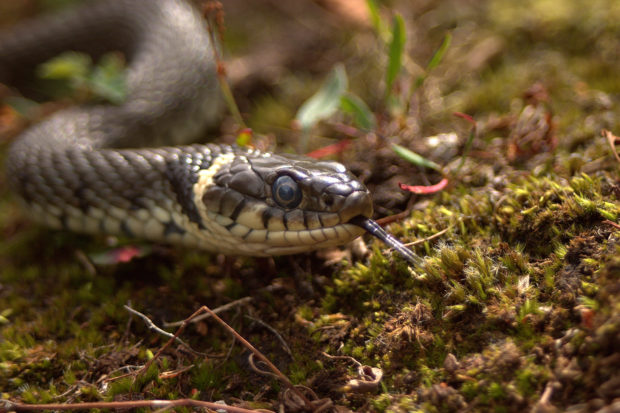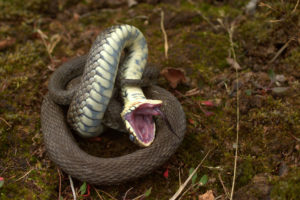Introducing the Pond Raider!
Freshly mown grass? Tarmac after a summer rain storm? Great smells yes, but ask a herpetologist what their favourite smell is and they’ll say grass snake musk (…or at least I will). But we’ll come back to that.
The Thames Basin Heaths team were lucky enough to have a close encounter with a grass snake recently, whilst out surveying with the Amphibian and Reptile Conservation Trust, so they are certainly out and about across the country. And whilst these snakes can readily be found on typical heathlands, they tend to prefer wetter areas such as wet heath, bogs, ponds and occasionally suburban gardens!
The grass snake can be identified by its obvious white-yellow collar, and can grow up to an impressive 1.7m long. But don’t be alarmed, grass snakes are completely harmless – unless you happen to be an amphibian or a fish! In fact, these snakes deploy some special tactics to avoid confrontation.
Pictured here is a grass snake feigning death (“thanatosis” if you want to impress your friends) whilst releasing a rather pungent (lovely) fluid to deter predators. So if you’re lucky enough to come across these charismatic snakes, please let them carry on their business. And if you live in a more rural area, ponds for feeding and compost heaps for egg laying are an excellent way to try and encourage them into your garden.
Remember, as with all reptiles and amphibians, if you do see one please consider recording it and contributing to valuable citizen science!
Next week I’ll be introducing one of Britain’s rarest reptiles, the sand lizard.
Warden Jamie


